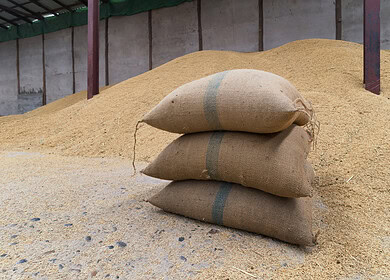Chinese research highlights the importance of precise water and nitrogen management in improving soil fertility

A three-year field study in Harbin, China, conducted by researchers from the School of Water Conservancy and Civil Engineering of Northeast Agricultural University, has explored the impacts of different irrigation and nitrogen management strategies on paddy soil carbon pools under deep placement of basal fertilizer nitrogen. The research aimed to improve soil quality and agricultural productivity by enhancing active soil organic carbon (SOC) fractions, critical for soil fertility. The study revealed that controlled irrigation (CI) combined with a nitrogen (N) application rate reduced by 10% significantly increased rice yield, total organic carbon (TOC), and active SOC fractions compared to conventional flooded irrigation (FI). This optimal strategy promoted a 3.8% – 8.63% higher rice yield under CI than FI and maintained higher levels of soil carbon indices, demonstrating its efficacy in enhancing both crop productivity and soil health.
The key findings include enhanced soil carbon pools, where under CI, TOC and active SOC fractions (easily oxidizable carbon, microbial biomass carbon, and dissolved organic carbon) were higher than under FI. The best results were observed with the Nd1 treatment, where these carbon pools reached their highest levels. Regarding improved rice yield, the growth rate was higher by 3.8% – 8.63% under CI compared to FI, with the highest yield achieved with the Nd1 nitrogen treatment under CI, indicating that moderate nitrogen reduction coupled with CI could maximize productivity.
The study also highlighted that the soil carbon pool management index (CPMI) increased under both the conventional nitrogen application rate and the reduced rate (Nd1) but decreased under excessive nitrogen reduction, suggesting that a balanced approach to nitrogen application is crucial for maintaining soil health. The beneficial effects of CI and optimal nitrogen application were evident not only in the surface soil (0–20 cm) but also in deeper layers, indicating a comprehensive improvement in soil quality across different depths.
In conclusion, the research underscores the significance of optimizing water and nitrogen management to enhance soil carbon sequestration and boost rice production. The findings suggest that the best practice for sustainable agriculture in this region is controlled irrigation combined with a 10% reduction in nitrogen application. This approach not only improves soil fertility and structure but also contributes to higher agricultural productivity and environmental sustainability in the Northeast Black Soil Region of China.
Enjoyed this story?
Every Monday, our subscribers get their hands on a digest of the most trending agriculture news. You can join them too!












Discussion0 comments